This post was published in Doors & Hardware
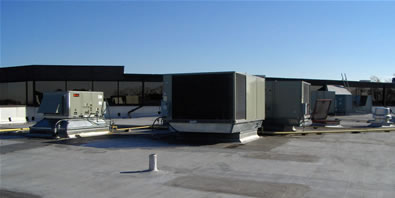 I continuously receive questions regarding roof doors – specifically whether free access is required from the stairwell to the roof, and whether free egress is required from the roof to the stairwell. The codes don’t address roof doors in great detail so some interpretation is necessary, and in some jurisdictions the code officials have preferences that are beyond what the codes require. I have spoken to quite a few code officials about their requirements for roof doors, but it’s important to be aware of any special requirements for your project’s location.
I continuously receive questions regarding roof doors – specifically whether free access is required from the stairwell to the roof, and whether free egress is required from the roof to the stairwell. The codes don’t address roof doors in great detail so some interpretation is necessary, and in some jurisdictions the code officials have preferences that are beyond what the codes require. I have spoken to quite a few code officials about their requirements for roof doors, but it’s important to be aware of any special requirements for your project’s location.
First, the question of free access to the roof. By “free access,” I mean a condition where any building occupant can move freely from the stairwell to the roof without a key, tool, or special knowledge or effort. Hollywood has taught us that in a fire we can just head out to the roof and wait for the helicopter to arrive, but this isn’t based on reality. Neither the International Building Code (IBC) nor the Life Safety Code (NFPA 101) typically require free access to the roof, and the false belief that building occupants can find safety by reaching the roof has lead to injury and death. There is evidence that during the events of 9/11, several hundred occupants of the World Trade Center headed for the roof and perished in the stairwells. In a 2010 fire in Boston, a resident was found on the stairwell side of the locked roof door, unable to reach fresh air and relative safety. She was resuscitated and she survived.
In the case of the Boston fire, the media focused on the fact that the roof “fire door” was locked. I spoke to several code officials in Boston and other cities around the country, and confirmed that free access to the roof is not required by code, and there are compelling reasons that free access to the roof is not desirable. If building occupants are allowed free access to the roof, it will cause an increase in accidental falls, attempted suicides, and vandalism. Some code officials indicated a preference for fail safe locks on the roof doors which unlock upon fire alarm to allow access to the roof, but this is not currently a requirement of the IBC or NFPA 101.
Whether a roof door is required to provide free egress from the roof depends on what the roof is used for. We can separate roofs into two general types – occupied roofs including roof gardens and rooftop assembly spaces, and unoccupied roofs which contain mechanical equipment and would be occupied at limited times for equipment maintenance and repair. The majority of roofs fall into the second category. Although the preference from a life-safety standpoint would be to always allow free egress from the roof, security concerns can sometimes drive the need to lock the door from the roof to the stairwell to prevent unauthorized access to the building. Both the IBC and NFPA 101 support the option of locking these doors on the roof side:
NFPA 101 – 2021:
7.2.1.5.8 – If a stair enclosure allows access to the roof of the building, the door assembly to the roof either shall be kept locked preventing access to the roof or shall allow re-entry from the roof.
IBC – 2021:
1006.3 – Egress from stories or occupied roofs. The means of egress system serving any story or occupied roof shall be provided with the number of separate and distinct exits or access to exits based on the aggregate occupant load served in accordance with this section.
1010.2.4 (7) – Doors serving roofs not intended to be occupied shall be permitted to be locked preventing entry to the building from the roof.
 Paragraph 7.2.1.5.8 from NFPA 101 says that roof doors have to EITHER allow free egress from the roof, OR be kept locked. I interpret this to mean that if the door is locked on the stair side preventing free access to the roof, it does not need to provide free egress from the roof. For unoccupied roofs, the IBC states the door can be locked to prevent entry from the roof. This is typically interpreted to mean that the door to an unoccupied roof can be locked on both sides. If acceptable to the code official, I recommend a double-cylinder deadbolt for this application, so the door doesn’t automatically lock behind the technician as he or she gains access to the roof.
Paragraph 7.2.1.5.8 from NFPA 101 says that roof doors have to EITHER allow free egress from the roof, OR be kept locked. I interpret this to mean that if the door is locked on the stair side preventing free access to the roof, it does not need to provide free egress from the roof. For unoccupied roofs, the IBC states the door can be locked to prevent entry from the roof. This is typically interpreted to mean that the door to an unoccupied roof can be locked on both sides. If acceptable to the code official, I recommend a double-cylinder deadbolt for this application, so the door doesn’t automatically lock behind the technician as he or she gains access to the roof.
Prior to the 2021 edition of the IBC the code required occupied roofs to be “provided with exits as required for stories.” For example, if a roof deck was classified as an Assembly use group, the same quantity of exits and the same hardware had to be provided as if the space was not located on the roof but elsewhere in the building. The code required free egress from the occupied roof, including panic hardware if the occupant load was more than 50 or 100 depending on which code was in use. The photo above is a rooftop garden in a hospital (my daughter is the tiny person in red), which had two egress doors providing free egress from the roof into the building. If greater security was needed for occupied roof doors, it would have to be provided by the use of alarms, or delayed egress locks if allowed by code (Note: The IBC does not allow delayed egress on Assembly occupancies).
A change to the 2021 edition of the IBC addresses code-compliant means of securing egress doors serving exterior spaces, including roof terraces and enclosed courtyards, where the path of egress leads through the interior of the building. This set of requirements applies to jurisdictions where the 2021 IBC has been adopted. Detailed information about this section of the code is included in this Decoded article.
In summary, free access to the roof from the stairwell is not required by the IBC or NFPA 101, but may be required or preferred by the local code official. Free egress from the roof to the stairwell is required for occupied roofs except in jurisdictions where the 2021 edition of the IBC has been adopted, but free egress from the roof is not mandated by the IBC or NFPA 101 for unoccupied roofs. There may, however, be a local requirement for free egress from unoccupied roofs so it’s best to check with the local code official. For locking an unoccupied roof door when acceptable to the code official, a double cylinder deadbolt can avoid accidental lockouts. If the door to the unoccupied roof is fire rated, a passage latch is required in addition to the deadbolt, and can be combined into one mortise lockset. This is a good compromise between life safety and security that is also code-compliant, unless prohibited by the local code official. If the code official requires fail safe locking to allow egress and/or access during an emergency, a fail safe electrified lockset with remote release can be used.
You need to login or register to bookmark/favorite this content.



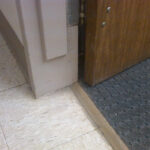
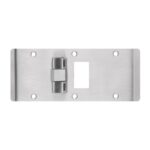
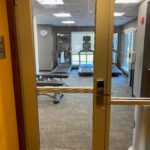
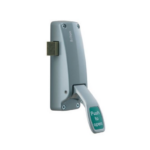
I would rather see a deadbolt with a cylinder x thumbturn (on the roof side).
How about a way for piping hot oil to be poured as well on any suspects that dare break in!
From a God’s-eye view, our city bldgs are kinda ugly — would like to see more beautifully landscaped roofs like Kidzilla’s playground here (nice pic!).
Typically in SoCal: specifying 2-cylinder communicating locks (e.g. Schlage L9466), where locking and unlocking are deliberate actions. Exception: bldgs w/ helipads –> using card access there. Lots of helicopters in L.A. area, heli-dropped intruder scenario very plausible.
If you are that into heli-dropped roof invasions then you should be the first to make the motion picture The Roof Thieves of 12 Grimmauld place! Coming soon to a theater and possibly an apartment near you!
Hello Lori,
My first question concerning roof doors usually is to ask if the door needs to be locked from the stair side, roof side, both sides or neither side and then go from there.
Do you have a list of questions available that you use to get to the end result which is correctly specified hardware for the application?
I believe the codes for this subject are pretty loose due to the fact that every situation is different and it requires some figuring.
Thanks for your great site!
Hi Keith –
Sorry for the delay! I don’t have a set list of questions, but I always recommend that the door is locked to prevent access to the roof. I guess my question there would be to make sure that the roof isn’t part of a means of egress – this is unusual. From the outside I prefer to allow free egress from the roof to the stairwell, but it is not required by the US codes if the roof is not occupiable (a roof with mechanical equipment is not considered occupiable). So I would ask if it’s acceptable to allow free egress or whether they want the roof side of the door secured. If both sides are to be secure, I prefer to specify a double-cylinder deadbolt along with the latching hardware.
– Lori
Roof doors are significant. Thank you so much for clearing out some questions in my head. I am looking forward to your next post!